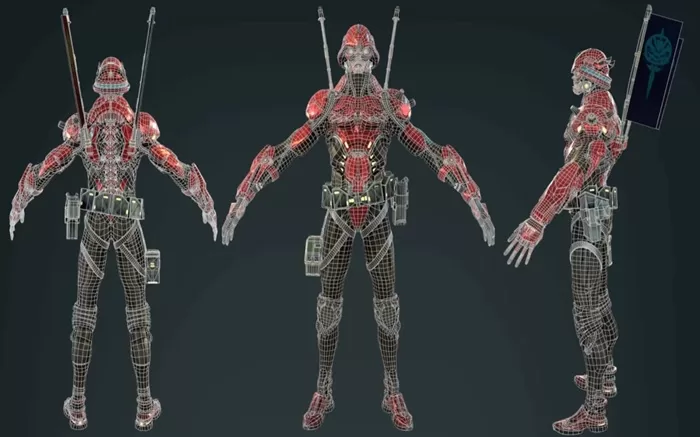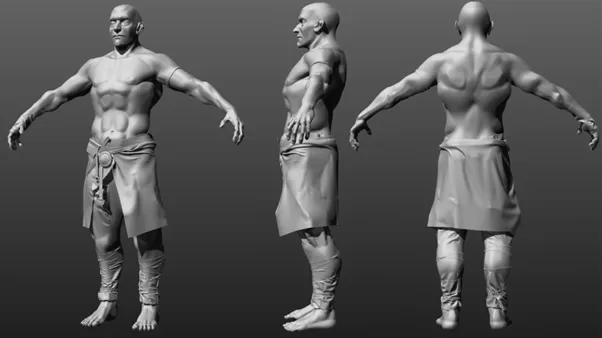Technology
Guide for Three-Dimensional Characters Animations Creation

If you’re interested in designing mesmerizing 3D character animations, then this guide is for you! By using the right software and honing your skills with practice, anyone can discover how to create lifelike characters. In this post, we’ll take a journey through every stage of creating 3D character animation – from outlining your characters to animating them efficiently with motion capture technology or keyframes before eventually rendering into an appropriate format ready for distribution. Now let’s start crafting!
Why 3D Character Animations?
Let your creative spirit run free and leave a lasting impression on viewers with mesmerizing 3D character animations! Thanks to the advancements in software technology, motion capture capabilities, and the attention-to-detail that you can put into each movement. No matter if you’re looking for a realistic feel or something more artistic; captivating visuals using 3D characters is key!
How to become a 3D character animator?
Crafting 3D animations can be daunting, but with the right guidance and dedication to practice anyone can learn it. To become proficient in character animation you need an understanding of fundamental principles and familiarity with various software applications; a working knowledge of motion-capture technology is essential as well as knowing how to present your final results in usable formats. If you’re interested in pursuing this career path, having experience with game engines such as those at Ubisoft or EA would also serve you well.
What You Need to Get Started
To create stunning 3D character animations, you’ll need to have the right tools – starting with a powerful computer. Your machine should be equipped with enough RAM and storage capacity to run animation software without interruption.
Moreover, it’s a good idea to get an external monitor or two so that you can watch your animations with ease. Additionally, animation software must be selected in order for the process of character animation to commence. Autodesk Maya, Blender and Adobe Animate are some of the most popular 3D character animation platforms available today.
To stay abreast of the most recent industry trends, technologies and techniques, seek out an internship or a degree in animation production. For example, EA’s esteemed internship program provides interns with exposure to all aspects of game development.
Identify the type of animation you want to create
Before you embark on your 3D animation journey, it’s essential to decide what type of animation will best illustrate the vision that you have in mind. Do you want a photorealistic finish or an artistic cartoon-inspired style? By accurately pinpointing this early on, not only can such beautiful visuals be created but also the software and techniques required for achieving said results can then be identified too. Additionally, consider whether motion capture technology should be used or if manual keyframes are preferred.
Choose a 3D software program and learn how to use it
Once you know what kind of animation you want to create, it’s time to select a 3D software program that can help you achieve your vision. To create amazing 3D models, three of the most popular programs are Autodesk Maya, Cinema 4D, and Blender. Examine each one’s features to decide which is the best fit for you. Then, cultivate your knowledge of its tools and capabilities by learning how to utilize it properly so that despite their complexity these user-friendly software programs will become second nature to you!
Design your characters
With your 3D software program now chosen, it’s time to create the characters you want to animate. Start by envisioning your character designs and constructing a framework using basic shapes. Subsequently, use the 3D software for modeling and refining these figures until they are utterly lifelike. Don’t forget that this process may take some patience, however it is fundamental in manufacturing convincing animations! Additionally, remember to add materials such as textures and lighting components to make them appear even more realistic!
Create the character’s skeleton structure and add motion constraints
To bring your characters to life and let them move, you must now create a skeletal structure. This process involves creating bones, setting up joints and constraints, and adding motion capture data. Once the skeleton is in place, you’ll be able to bring your characters to life by animating them with keyframes or motion capture technology.
Animate with motion capture or keyframes
The next step in the animation process is to animate your characters. You can either use motion capture technology (like a Kinect camera) to record real-life motion, or you can animate the characters by hand with keyframes. Keyframing involves setting up specific poses and then animating the movement in between those poses. It’s a long process, but when done correctly it can yield real results.

source: cloudinary.com
Render out your animation in a final file format
Once you’ve completed the animation, it’s time to render out your designed 3D animated characters in a file format suitable for distribution. To successfully render your project, make sure to use popular formats like QuickTime and AVI files or image sequences such as PNG or TIFF. Although it may require dedicating some time to configure the settings correctly on the right software, once you have everything up and running properly you can leave behind any worries of a failed output!
Add facial expressions and lip-sync dialogue for more realistic animations
To give your 3D character animation a more realistic effect, facial expressions and lip-sync dialogue should be incorporated. Utilizing motion capture technology or manually animating each frame through image editing software are both excellent methods of doing this. Doing so will help ensure that the characters’ faces move in sync with their words, creating a much more realistic effect within the animation.
Final words
With the right tools and software, you can bring your 3D character animations to life in nearly no time! From designing the initial concepts through to rendering out a final file format, this guide will provide you with all of the necessary steps for achieving remarkable visual results. So don’t wait any longer—start animating today and make your characters stand-out from everyone else’s! Best of luck on your journey toward success!




















































